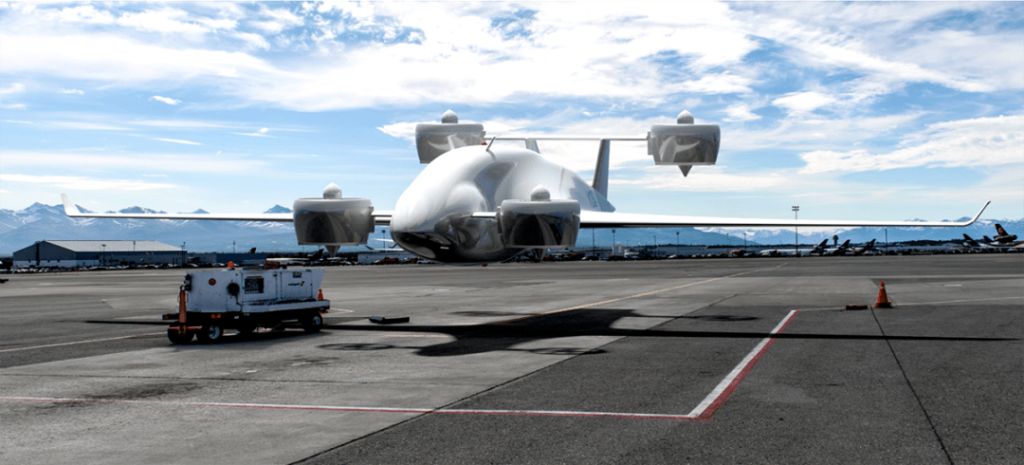
SAN JOSE, Calif. — Officials from the Pentagon and White House emphasized their support and interest in the ongoing development of revolutionary VTOL aircraft at the Transformative Vertical Flight conference last week. The new class of aircraft, which combine elements of helicopters and airplanes and use either hybrid or fully electric propulsion, are being developed by dozens of companies for use as commercial air taxis in traffic-congested cities.
The military continues to express high-level interest in these aircraft, often referred to as ‘eVTOLs,’ eyeing the billions of dollars in commercial R&D spending as something to leverage for the national defense. The White House circulated a budget priorities memo in August 2019, directing departments to support the development of eVTOLs and autonomous aircraft systems.
“As we look into the future and see the potential of the discretionary budget that allows us to advance our military capabilities, that’s not likely to increase under the current fiscal environment,” said Lt. Col. Nathan Diller, assistant director of aeronautics at the White House’s Office of Science and Technology Policy. “And so what are the things that we can do potentially to leverage what the commercial industry is doing in a way that helps us with logistics?”
Diller, who also has a role at the Pentagon’s Strategic Capabilities Office, described the military’s interest in eVTOLs as “to potentially transform the way we do our national defense in a way that, one, reduces cost to the taxpayer, and two, creates more agility and better survivability for our soldiers, sailors and airmen.”
“[The use cases] are really to reduce risk to the manned footprint on the ground, it’s very important to use to reduce the logistics stockpile, provide flexibility of manpower, to provide simple, cheap, cost effective and redundant options and limited manpower to operate,” Diller said.
Much of the hype around eVTOLs has focused on the push by Uber [UBER] and others to create a commercial air taxi system — something which will require years in the FAA’s certification process to reach fruition — but startups including Elroy Air and Sabrewing are focused on autonomous VTOL aircraft for cargo transport.
Sabrewing’s Rhaegal, a semi-autonomous hybrid-electric VTOL aircraft under development, aims to carry 1,000 pounds over 1,000 miles. CEO Ed de Reyes told Defense Daily the full-scale aircraft will fly for the first time in the coming months, but certification discussions with the FAA began in 2018 and the company has already booked $51 million in orders.
The Rhaegal will be about the “price of a Cessna SkyCourier,” de Reyes said — referring to a plane with a $5.5 million list price — but require no ground infrastructure and no pilot. Sabrewing also plans a larger ‘Wyvern’ airplane with a load capacity up to 4,400 pounds.
And the military is very, very interested. This month, the Navy is hosting a fly-off competition in Yuma, Arizona, to find a UAV resupply vehicle capable of carrying 60 pounds, a competition called Unmanned Logstics Support – Air (ULS-A). That challenge is the smallest of a three-part joint service push to develop cargo UAVs to resupply troops, with the largest category searching for an aircraft like the Wyvern — capable of carrying “ideally 3-4,000 pounds,” according to Carmine Borrelli, USMC director of unmanned aerial and ground logistics systems.
“That’s about within the range that we see in the Uber market,” Borrelli told the emerging eVTOL industry at the conference hosted by the Vertical Flight Society. “We’re focused on cargo, but certainly linking to the Air Force, which could potentially go for passengers.”
“We really started this off with $40,000 and just trying to fly platforms to get leadership to understand,” Borrelli said of the ULS-A effort. “The biggest problem we have now — it’s not really about buy-in. They want the systems very quickly now. They know what [these aircraft] can do. We’ve researched the requirements to the point where we understand what our Marines and our soldiers want, and now we’re to the point where we just need to really get the systems out there where they can experiment [and then] to begin fielding.”
According to de Reyes, the Pentagon has expressed an interest in procuring 4,000 unmanned VTOL aircraft similar to what Sabrewing is developing between now and 2030.